Past Events
2017-2018: “Scripts”
Self-presentation in Egyptian Funerary Monuments of the Middle Kingdom
Tuesday, April 3rd, 5:00-6:30pm: Dr. Denise Doxey
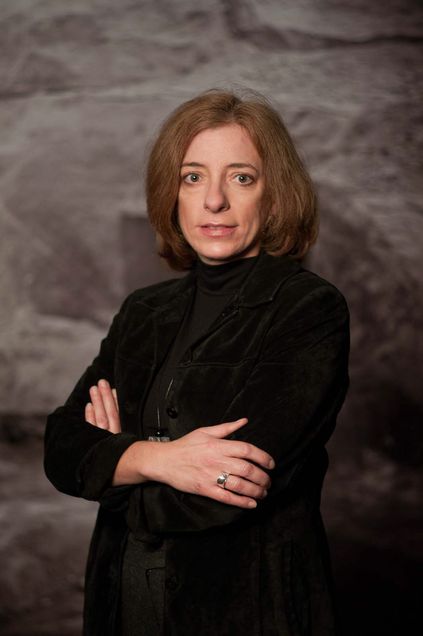 Denise Doxey is Curator, Ancient Egyptian, Nubian and Near Eastern art at the Museum of Fine Arts, Boston. Before joining the staff of the MFA, she was Keeper of the Egyptian Section of the University of Pennsylvania Museum of Archaeology and Anthropology. She completed her B.A. at the State University of New York at Albany, her M.Phil at Oxford University and her Ph.D. at the University of Pennsylvania. She is the author or co-author of four books and nu
Denise Doxey is Curator, Ancient Egyptian, Nubian and Near Eastern art at the Museum of Fine Arts, Boston. Before joining the staff of the MFA, she was Keeper of the Egyptian Section of the University of Pennsylvania Museum of Archaeology and Anthropology. She completed her B.A. at the State University of New York at Albany, her M.Phil at Oxford University and her Ph.D. at the University of Pennsylvania. She is the author or co-author of four books and nu
merous articles on various aspects of Egyptian and Nubian art, archaeology and civilization. She has excavated in Greece and Egypt and has taught Egyptology courses at the University of Pennsylvania and Harvard University. At the MFA, she was the co-curator of The Secrets of Tomb 10A: Egypt 2000 BC and Gold and the Gods: Jewels of Ancient Nubia. She currently serves on the board of ICOM’s International Committee for Egyptology and is president of the New England Chapter of ARCE.
During Egypt’s Middle Kingdom (ca. 2040-1640 BCE), the funerary monuments of regional officials integrated scenes and inscriptions created to demonstrate that they had lived and served in accordance with maat, the concept of justice and world order. Because these officials served as intermediaries between the people of their districts and the central government, tomb scenes portray them as rulers over the local population while, at the same time, offering formulas and autobiographies display humble obedience to the king and, through him, to the gods. Dr. Doxey’s talk will discuss her research into how texts and images were strategically combined to serve as a sort of curriculum vitae for admission to the afterlife, while also exploring their intended audiences, non-royal, royal, and divine.
Event will be held in the Executive Boardroom at the Boston University Elie Wiesel Center for Jewish Studies (147 Bay State Road Boston, MA 02215) on Tuesday, April 3rd from 5:00-6:30. All interested faculty, graduate and undergraduate students are encouraged to attend.
When Buddhism Turned to Writing
Tuesday, March 20th, 5:00-6:30pm: Professor Richard Salomon

Dr. Richard Salomon is Professor of Asian Languages (Sanskrit) and William P. And Ruth Geberding University Professor at the University of Washington. He also directs the University of Washington’s Early Buddhist Manuscripts Project.
According to the historical traditions of the Theravāda (southern) school of Buddhism, it was around the first century BCE, during a time of crisis and famine, that Buddhists first felt the need to supplement their original purely oral mode of textual preservation by recording the “scriptures” in written form. But until recently, no actual manuscripts from this early period had survived, so that the details of the process of shifting from oral to written transmission were completely unknown.
However, the discoveries in recent decades of hundreds of unprecendently early Buddhist manuscripts from the ancient region of Gandhāra (modern northern Pakistan and eastern Afghanistan), some dating back to the first century BCE, provide specimens of texts from very near the beginning of the written tradition of Buddhism. Examples and illustrations from these Gandhāran manuscripts will show how Buddhist canonical and post-canonical texts were first rendered into written form and how this gradually led to the development of a formal literary tradition.
Event will be held in the library at the Boston University Elie Wiesel Center for Jewish Studies (147 Bay State Road Boston, MA 02215) on Tuesday, March 20th from 5:00-6:30. All interested faculty, graduate and undergraduate students are encouraged to attend.
Back to West African Script Styles: A Taxonomy and Provisional Implications for Historical Analysis
Thursday, February 15th, 5:00-6:30pm: Professor Mauro Nobili, with response by Professor Fallou Ngom
 Dr. Mauro Nobili is an Assistant Professor of History & African American Studies at University of Illinois. Dr. Nobili is a historian of pre-colonial and early-colonial West Africa, with a specific interest in the area of the modern Republic of Mali and the town of Timbuktu. His focus is on Muslim societies of the region and their Arabic manuscript heritage. He conducts research in several collections of Arabic manuscripts from West Africa, stored in public or private libraries in Africa (Mali, Nigeria, Senegal, Niger, Ghana, and Ivory Coast), in Europe (Denmark and France) and North America (USA). Nobili has worked and published on topics linked to Arabic calligraphies and script styles, Islamic eschatology, genealogies and the West African chronicle tradition.
Dr. Mauro Nobili is an Assistant Professor of History & African American Studies at University of Illinois. Dr. Nobili is a historian of pre-colonial and early-colonial West Africa, with a specific interest in the area of the modern Republic of Mali and the town of Timbuktu. His focus is on Muslim societies of the region and their Arabic manuscript heritage. He conducts research in several collections of Arabic manuscripts from West Africa, stored in public or private libraries in Africa (Mali, Nigeria, Senegal, Niger, Ghana, and Ivory Coast), in Europe (Denmark and France) and North America (USA). Nobili has worked and published on topics linked to Arabic calligraphies and script styles, Islamic eschatology, genealogies and the West African chronicle tradition.
Among the different aspects of the literate cultures of Islamic West Africa that have been neglected by scholars is the study of the local “styles” of writing the Arabic alphabet. Most of the time, scholars refer to the styles displayed in West African Arabic-based manuscripts as maghribi – the script peculiar of North Africa west of Egypt. Others employ the “umbrella term” sudani – which is in fact used to describe a “degenerated version” of the maghribi . In his paper, Professor Nobili first explores the genealogy of the term sudani and proves its inadequacy to represent the many different styles found in West African manuscripts. Then, he introduces his more accurate yet preliminary classification of such styles, comparing three of them (Saharawi, Suqi, and Barnawi) and presenting their paleographic features. He concludes by showing how the analysis of West African scripts is not a futile exercise of paleography. On the contrary, it provides crucial information on the development of literacy in different parts of West Africa.
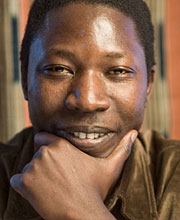 Dr. Fallou Ngom’s current research interests include the interactions between African languages and non-African languages, the Africanization of Islam, and Ajami literatures—records of West African languages written in Arabic script. He hopes to help train the first generation of American scholars to have direct access into the wealth of knowledge still buried in West African Ajami literatures, and the historical, cultural, and religious heritage that has found expression in this manner. Another fascinating area of Dr. Ngom’s work is language analysis in asylum cases, a sub-field of the new field of forensic linguistics. His work in this field addresses the intricacies of using knowledge of varied West African languages and dialects to evaluate the claims of migrants applying for asylum and determine if the person is actually from the country that he or she claims. Dr. Ngom’s work has appeared in the International Journal of the Sociology of Language, Journal of Multilingual and Multicultural Development, Language Variation and Change, and African Studies Review, among others.
Dr. Fallou Ngom’s current research interests include the interactions between African languages and non-African languages, the Africanization of Islam, and Ajami literatures—records of West African languages written in Arabic script. He hopes to help train the first generation of American scholars to have direct access into the wealth of knowledge still buried in West African Ajami literatures, and the historical, cultural, and religious heritage that has found expression in this manner. Another fascinating area of Dr. Ngom’s work is language analysis in asylum cases, a sub-field of the new field of forensic linguistics. His work in this field addresses the intricacies of using knowledge of varied West African languages and dialects to evaluate the claims of migrants applying for asylum and determine if the person is actually from the country that he or she claims. Dr. Ngom’s work has appeared in the International Journal of the Sociology of Language, Journal of Multilingual and Multicultural Development, Language Variation and Change, and African Studies Review, among others.
Event will be held in the library at the Boston University Elie Wiesel Center for Jewish Studies (147 Bay State Road Boston, MA 02215) on Thursday, February 15th from 5:00-6:30. All interested faculty, graduate and undergraduate students are encouraged to attend.
Pure Words from the Water: Haudenosaunee Uses of Wampum
Friday, October 13th, 5:00-7:00pm: Professor Philip P. Arnold
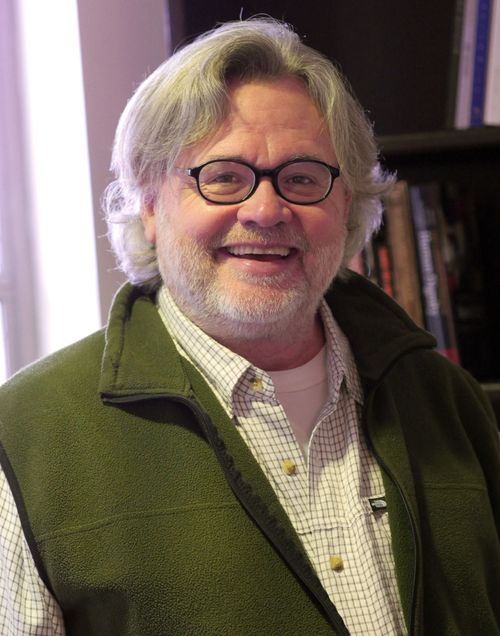
Philip P. Arnold is Associate Professor and Chair of Religion Department at Syracuse University as well as core faculty in Native American and Indigenous Studies. He is the Director of the Skä·noñh—Great Law of Peace Center (www.skanonhcenter.org/). His books are Eating Landscape: Aztec and European Occupation of Tlalocan (1999); Sacred Landscapes and Cultural Politics: Planting a Tree (2001); The Gift of Sports: Indigenous Ceremonial Dimensions of the Games We Love (2012) and Urgency of Indigenous Religions (University of New Mexico Press, forthcoming). He is a founding member of Neighbors of the Onondaga Nation (NOON), (www.peacecouncil.net/NOON/index.html) and established the Doctrine of Discovery Study Group (www.doctrineofdiscovery.org) He is the President of the the Indigenous Values Initiative (www.indigenousvalues.org), a non-profit organization to support the educational work of the Skä·noñh—Great Law of Peace Center.
Professor Arnold will be presenting on his latest work, entitled “Pure Words from the Water: Haudenosaunee Uses of Wampum”. The Haudenosaunee (Iroquois) have used wampum for millennia. It is connected with the founding events of the “Great Law of Peace,” which took place in what is now known as Central New York. This epic story depicts how the 5 warring nations (Mohawk, Oneida, Onondaga, Cayuga, and Seneca) came together in peace at Onondaga Lake (near Syracuse) through the use of wampum in condolence ceremonies established by the Peacemaker for Hiawatha and the Tadodaho. Wampum is used in strings and belts from the time of the Peacemaker until today and is understood to denote a purity of intention in speech, because of its relationship with water. It has been an important feature of the Haudenosaunee treaty relationships with European and American governments.
Flyer to come. Event will be held in the library at the Boston University Elie Wiesel Center for Jewish Studies (147 Bay State Road
Boston, MA 02215) on Friday October 13th from 5:30-7:30. All interested faculty, graduate and undergraduate students are encouraged to attend.
Seasonal Gods and Cosmic Kings: The Politics of Belief on a Classic Maya Lintel
Wednesday, November 1st, 5:00-7:00pm: Professor Stephen Houston
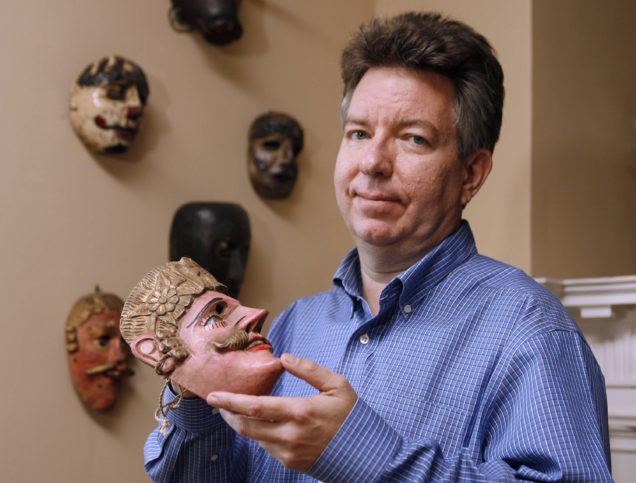
Stephen Houston serves as the Dupee Family Professor of Social Sciences at Brown University, where he also holds an appointment in Anthropology. A specialist in Classic Maya civilization, writing systems, and indigenous representation, Houston is the author of many books and articles, including, most recently, Temple of the Night Sun (Precolumbia Mesoweb Press), The Maya (with Michael Coe, now its 9th edition), and The Life Within: Classic Maya and the Matter of Permanence (Yale University Press), winner of a PROSE Award in 2014. He was co-curator, too, of a major show, Fiery Pool: The Maya and the Mythic Sea, which was exhibited at the Peabody-Essex Museum, the Kimbell, and the St. Louis Museum of Fine Arts. Houston has been honored with a MacArthur, along with fellowships and grants from the Guggenheim Foundation, the National Science Foundation, Dumbarton Oaks, the Clark Art Institute, and the National Endowment for the Humanities; he has also been the Ailsa Mellon Bruce Senior Fellow at the Center for Advanced Study in the Visual Arts, National Gallery of Art. His current projects concern the central role of young men in Classic Maya text and image, the lives and roles of Maya sculptors, and reports on two large-scale excavations, one at the great dynastic center of Piedras Negras, Guatemala, the other, El Zotz, in the same country. In recognition of Houston’s scholarship, the President of Guatemala awarded him, in 2011, the Grand Cross of the Order of the Quetzal, that country’s highest honor. For that same body of work, Houston also received the Tatiana Proskouriakoff Award in 2013 from the Peabody Museum, Harvard University. He is a summa cum laude graduate of the University of Pennsylvania; his Ph.D., awarded in 1987, is from Yale.
Professor Houston’s work, entitled “Seasonal Gods and Cosmic Kings: The Politics of Belief on a Classic Maya Lintel” covers a set of monuments that graft Maya dynastic politics onto concepts of sun, moon, seasons, and other solar patterns. Among the most potent images in the Maya world are those that fuse dynastic needs with mythic verities. Kings and nobleman come to discharge, or are seen to discharge, roles and duties set in the remote past. Expansive beings, the gods themselves, undertake tasks that humans can emulate. Through deity impersonation, those same people become one with supernatural figures. A compact illustration of these themes is a set of lintels taken over 50 years ago from what is now the Republic of Guatemala. For the most part, the carvings have languished in obscurity, only to re-emerge, after decades, in the recent past. A fresh set of images and technical assays permits a re-examination of their content, in sculptures commissioned for an unknown site under the control of the kingdom of Yaxchilan, Mexico. One carving in particular, to be studied closely here, grafts the supernatural and the political in a work that exemplifies Classic Maya fusions of identity. In doing so, it engenders a sense of inevitability, likening dynastic statecraft, hierarchy, and acts of building to the cosmic order of gods.
Flyer to come. Event will be held in the library at the Boston University Elie Wiesel Center for Jewish Studies (147 Bay State Road
Boston, MA 02215) on Wednesday, November 1st from 5:30-7:30. Reception will follow in the Boardroom of the Elie Wiesel Center. All interested faculty, graduate and undergraduate students are encouraged to attend.
2016-2017: “The Unfolding of Scripture Through Movement”
“Cosmos and Creation in the Twelfth Century: An Interpretation of Genesis 1”
Monday, April 24, 5:30 PM: Margot Fassler at the Boston Museum of Science Planetarium
Margot Fassler is a musicologist known for her innovative work at the intersection of music, liturgy, and theology in medieval European Christianity. Before taking up her current position in the departments of music and theology at Notre Dame, she taught for many years at the Institute for Sacred Music at Yale University, serving as director for ten years. Her most recent book, The Virgin of Chartres: Making History through Liturgy and the Arts (Yale University Press, 2011), is a prize-winning exploration of the intersections between liturgy, theology, and architecture at the famous Chartres Cathedral in France.
Her newest work on Hildegard of Bingen, supported by a Guggenheim and an ACLS Digital Innovation Fellowship, explores the way that liturgy, theology, music, drama, and the visual arts work together. Fassler has worked with digital artist Christian Jara and the planetarium staff at the University of Notre Dame to develop a digital model of Hildegard’s complex visualization of creation. This model of the universe, based on Hildegard’s treatise Scivias, is a full-dome digital presentation with music, created by Christian Jara and Margot Fassler, with a soundtrack by musicians from the Notre Dame Program in Sacred Music based on chants by Hildegard relating to her vision of the cosmos as it was created and spins in time toward its end.
Hildegard of Bingen (1098-1179) was a German nun, a prophet who wrote theological treatises, biblical commentary, nearly 400 letters, poetry and drama; she composed music, and designed art works. She was a scientist too, and had great interest in the cosmos, its creation, and its meanings as a work of divine inspiration. To display this work Fassler and Jara constructed a model depicting stages of the “Cosmic Egg,” from Hildegard’s description of a big bang within a dark chaos to a spinning and fully zoomable globe that grows through six days of development, enhanced by music composed by Hildegard as a companion to the text/illustration.
Performing Sanskrit Scripture in Kerala, India
Monday, March 27, 5:30 PM: Leah Lowthorp and Finnian Moore Gerety, with Frank Korom, Moderator
Photonics Colloquium Room, Photonics Building, 9th Floor (8 St. Mary’s Street)
Reception to Follow at MeiMei Restaurant (506 Park Drive)
Lowthorp Workshop: Monday, March 27, 2:30-3:45 in Professor Kyna Hamill’s TH 102, Dramatic Literature course in the College of Fine Arts (members of the BU community are welcome to attend)
Kutiyattam(s) in Context: Complicating Rituality and Aesthetics in Sanskrit Theater
Leah Lowthorp holds a dual doctoral degree in Anthropology and Folklore & Folklife from the University of Pennsylvania and is currently a postdoctoral fellow in Folklore and Mythology at Harvard University. As part of her dissertation work on the impact of UNESCO recognition of Kūtiyāttam as an Intangible Cultural Heritage in Kerala, India, she was trained in the techniques and performance of the tradition. She has a unique ability to bridge the divide between “study of” and “participation in” this tradition, and in her lecture/demonstration she will share her perspective on “the ways artists emically conceive of rituality in relation to contemporary practice both inside and outside of the temple.”
Kutiyattam(s) in Context Talk Description: Widely considered the oldest continuously performed theater in the world, Kutiyattam Sanskrit theater has been performed as a hereditary temple art by upper-caste men and women in Kerala since the eleventh or twelfth century C.E. Characterized by some as a “visual sacrifice”(chakshusha yajna), it was performed exclusively by hereditary performers within temple theaters until the mid-twentieth century. Following intense social and political upheavals in twentieth century Kerala, Kutiyattam performers and performance spaces were democratized, and it is now performed by hereditary and non-hereditary performers on temple and public stages throughout Kerala, India, and the wider world. This talk explores the impact of Kutiyattam’s democratization upon notions of rituality and aesthetics in performance. Based on nearly two years of ethnographic research among the Kutiyattam community in Kerala, India, it focuses on the ways in which Kutiyattam artists emically conceive of rituality and aesthetics in relation to both past and contemporary practice. By examining the divergent ways in which artists contextually conceptualize these categories—temporally, spatially, and via repertoire—Dr. Lowthorp complicates the binary relationship between rituality and aesthetics that has been assumed in previous academic studies of Kutiyattam.
When Scripture Comes Alive: Aesthetics of Memory in Vedic Chanting in Kerala
Finnian M. Gerety holds a doctoral degree from the Department of South Asian Studies at Harvard University and is Visiting Assistant Professor of Religious Studies at Brown University. He works on ritual, text, and the senses in South Asian religions, with a focus on Hindu traditions of India. He has authored an article soon to appear in The Journal of Asian Ethnology entitled “Digital Guru: Embodiment, Technology, and the Transmission of Traditional Knowledge in Kerala,” which explores the manner in which the Nambudiri Brahmins of the South Indian state of Kerala transmit “what may be the oldest surviving musical culture in South Asia, a fixed oral tradition of sacred songs used in ritual (sāmaveda). Without recourse to written notation, Nambudiri practitioners teach songs face-to-face, using their voices and a distinctive system of hand gestures to convey melodies to their students.”
When Scripture Comes Alive Talk Description: While the Sanskrit scriptures of Hinduism, the Vedas, are widely available in manuscripts and books, many Hindus believe that the power of Vedic formulas (mantras) can only realized in performance, chanted aloud from memory by Brahmin priests. In Kerala, this authority is vested in lineages of Nambudiri Brahmins, who boast a tradition of Vedic transmission and performance going back many centuries. In this talk Dr. Gerety will focus on the aesthetics of Nambudiri performance, which are concerned above all with demonstrating mnemonic mastery over the mantras, liturgies, and rules that inform Vedic recitation and ritual. In this context, competence is predicated on precise chanting, posture, breath control, and ritual purity; to guard against mistakes, prompters guide the priests’ every gesture and utterance with cues and hand signals. In this aesthetic realm, faithful replication of traditional norms is paramount, personal expression is discouraged, and audience participation is tightly controlled. Members of the public are only invited to watch and listen from a distance, perform acts of worship directed towards the performance, and make cash donations. In this way, the aesthetics of memory foster the Nambudiris’ collective identity and regional reputation as living embodiments of Hindu scripture.
Frank Korom is Professor of Religion and Anthropology at Boston University.
Please contact scripart@bu.edu for more information on the workshop.
Mapping and Unmapping Jewish History in Early Modern Bibles
Monday, February 13, 2:30-4:00 PM: Jeffrey S. Shoulson at the Elie Wiesel Center for Jewish Studies
147 Bay State Road, 2nd Floor Library
Boston University Jewish Studies Research Forum and the BU Program in Scripture and the Arts are pleased to welcome Professor Jeffrey S. Shoulson. Shoulson is Doris and Simon Konover Chair of Judaic Studies, Director of the Center for Judaic Studies and Contemporary Jewish Life, Professor of Literatures, Cultures, and Languages, and Professor of English at the University of Connecticut. He is also author of Milton and the Rabbis: Hebraism, Hellenism, and Christianity (2001) and Fictions of Conversion: Jews, Christians, and Cultures of Change in Early Modern England (2013). He is also co-editor of Hebraica Veritas? Christian Hebraists and the Study of Judaism in Early Modern Europe (2004).
“Mapping and Unmapping Jewish History in Early Modern Bibles” will examine the role played by maps depicting the Holy Land and other biblical locations—printed in Bibles as well as in other accounts of the region—in the construction of spaces construed as “Jewish.”
Gesture and Power: Religion, Nationalism, and Everyday Performance in Congo
Thursday, November 3, 5:30 PM: Yolanda Covington-Ward
Sargent (635 Commonwealth Ave), Room 102
Yolanda Covington-Ward is a professor of Africana Studies at the University of Pittsburgh. Trained as an anthropologist, she is the author of Gesture and Power: Religion, Nationalism, and Everyday Performance in Congo (2015, Duke University Press). Her research interests revolve around the relationship between social connections, interpersonal interactions, and group identities, and how they impact and are impacted by physical bodies. She has conducted extensive ethnographic research in the Democratic Republic of Congo and among Liberian communities in the United States. Her lecture will focus on embodiment and religion as explored in her recent book. We are excited to bring this important work to colleagues in religion, literature, anthropology, and African studies.
Friday, November 4th, 10:00-11:00AM: Yolanda Covington-Ward
William O. Brown Seminar Room (505), African Studies Center (232 Bay State Rd)
Professor Covington-Ward will hold a workshop for faculty and graduate students on Friday, November 4, from 10 AM -11:30 AM in the William O. Brown Seminar Room (505) in the African Studies Center (232 Bay State Rd). The workshop will be on her ongoing work on Liberian diasporas entitled “I Don’t Even Know Monrovia in the First Place”: Displaced Bodies and Shifting Identities in the Liberian Diaspora. Please RSVP for a pre-circulated paper: https://goo.gl/forms/CMPEtQg8gVbcjqxk1. More details found here.
2015-2016: “Reading Between Word and Image in Medieval Europe, Africa, and Western Asia”
The 2015-2016 Scripture and the Arts program theme was titled “Reading Between Word and Image in Medieval Europe, Africa, and Western Asia.” Our three-speaker program featured Marcus Milwright on the seventh-century Dome of the Rock mosaic inscriptions in Jerusalem; Caroline Walker Bynum on medieval German devotional objects related to veneration of the Holy Family; and Gary Vikan on the Christian art of Ethiopia.
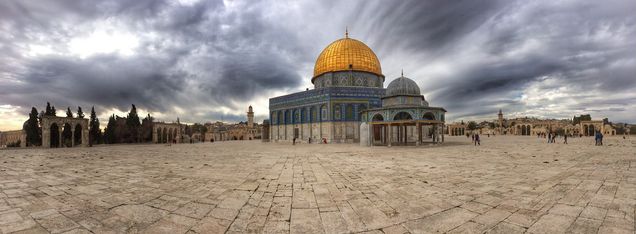
November 9, 2015: “Medium and Message: Decoding the Mosaic Message in ‘Abd al-Malik’s Dome of the Rock” with Marcus Milwright
Marcus Milwright, from the University of Victoria Department of Art History and Visual Studies, is an authority on the art and architecture of the Islamic Middle East, cross-cultural interaction in the Medieval and early Modern Mediterranean, and craft practices in Late Ottoman Syria. In this lecture, he examined the golden mosaic inscriptions on the seventh-century Dome of the Rock in Jerusalem. These inscriptions contain professions of faith, verses drawn from the Qur’an, and other statements of a religious nature. Professor Milwright considerd this mosaic writing in the context of late antique craft practices and early Arabic epigraphy in order to suggest new ways of understanding the messages conveyed by the mosaic inscriptions and their role in the ideological program of the early Islamic state.
Closely examining these inscriptions in light of historical mosaic inlay techniques, architectural practices, the development of the Arabic script, and Quranic development, Professor Milwright compellingly framed novel ways of understanding the original purpose of the Dome of the Rock and its place in early Islam. The event evoked a lively conversation about the early social and religious development of both the early Islamic state and Islam itself and drew a broad range of responses from audience members representing archaeology, art history, religious studies, linguistics, and other disciplines.
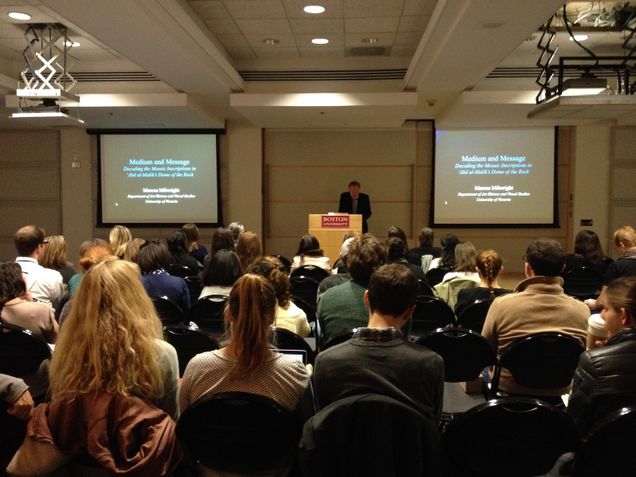
March 24, 2016: “Holy Beds and Holy Families: Encounters with Devotional Objects in the Metropolitan Museum of Art” with Caroline Walker Bynum
Caroline Walker Bynum, from the Institute for Advanced Study, is a preeminent scholar in the field of Medieval Christian Studies, and her work has been instrumental in introducing the concept of gender into the study of medieval Christianity. In this lecture, she presented material thematically linked to her most recent publication, Christian Materiality. At an exhibit in Detroit fifty-five years ago, a much loved beguine cradle on loan from New York’s Metropolitan Museum was treated simply as a piece of furniture. But at the Met, the cradle, which once held a Christ child laid in it by the religious women in whose community it stood, points the viewer toward other works related to the holy family, all on display nearby but not usually considered together. Interpreting these devotional objects in their social and devotional context, Professor Bynum argued that medieval images—both literary and material—evoked, even compelled, a far more complex, nuanced, and even contradictory sense of the holy than much recent work on materiality suggests.
Bynum’s talk also explored the pregnant ambiguities that lie at the boundaries between worship, play, and ornamentation. Drawing primarily on objects found at the Metropolitan Museum, Bynum’s discussion highlighted rich layers of interactive sensuality—particularly sight and touch—that characterized late medieval Christian worship and which have since been lost or relegated to obscurity. The lecture was well attended by faculty, staff, and students of the university as well as members of the larger Boston community, whose attendance was particularly sought.

April 4, 2015: “The Sacred Art of Ethiopia” with Gary Vikan
Professor Vikan, the Benedict Distinguished Visiting Professor at Carleton College, was also the director of the Walters Art Museum for 18 years and brought a wide range of expertise to his brief visit to Boston University. Professor Vikan engaged with how Ethiopian Christian art is distinctive from that of Byzantium and “western” Christianity in style and iconography as well as in the ritual of its use, how Jesus has been understood and portrayed in Ethiopia, and who the great Ethiopian artist Fere Seyon was in this context. He discussed the history and character of Ethiopian Christian art—icons, manuscripts, and crosses—from its first tentative appearance on fourth-century coinage to the eighteenth century. The lecture drew heavily on objects in the Walters Art Museum collection in Baltimore, which is the finest of its kind outside of Ethiopia, but also addressed other works, including the great “Holy Land” architectural complex at Lalibela.
Dr. Vikan has been quite active in the international conversation around how to handle trade in antiquities, particularly since the rise of ISIS and concerns about the possibility that looting and the illegal sale of antiquities might support their military goals. We took advantage of Dr. Vikan’s expertise by having him offer a workshop on “The Legal and Moral Challenges of Acquiring Antiquities and Medieval Art: A Case Study,” which brought in participants from museum studies and other related programs. We were also thrilled to welcome about twenty members of Boston’s Ethiopian community to the public lecture. In sum, Vikan’s visit was especially gratifying in that it enabled us to reach a range of BU and Boston community members we have never drawn in before.
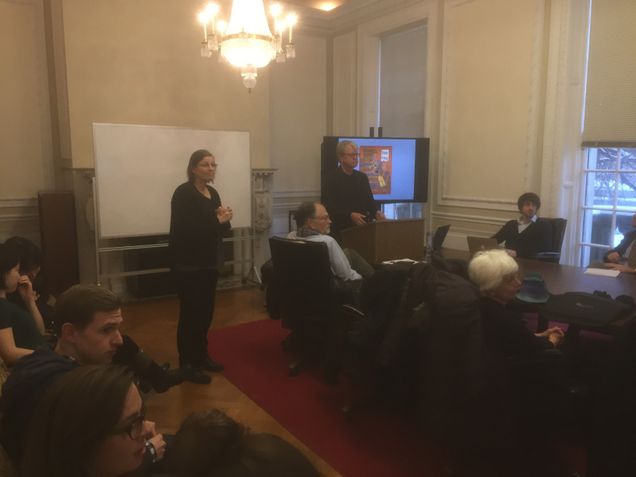
For events beyond the past academic year, please reference the annual reports and the “Lectures and Events” news feed. Thank you for your interest!